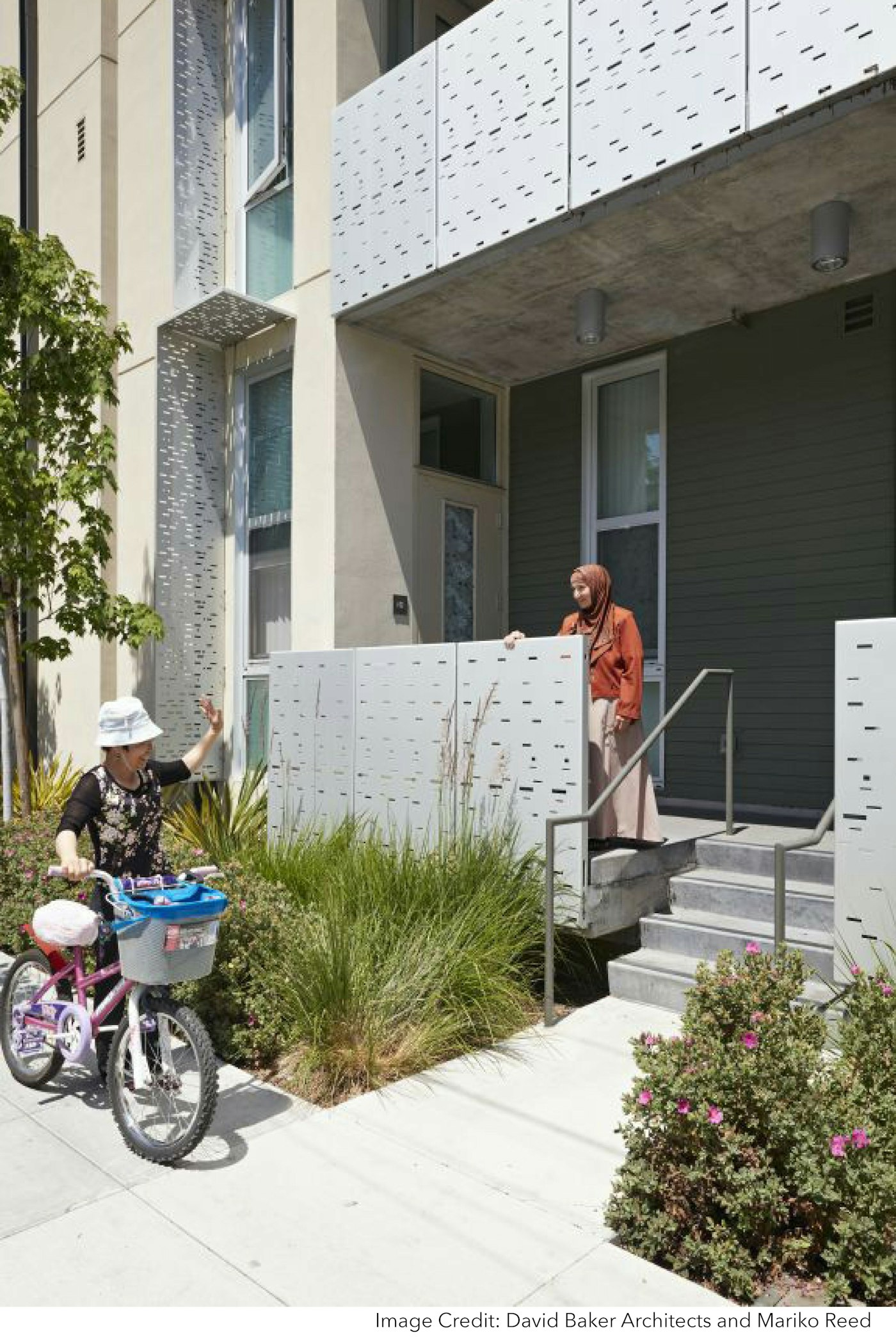Objective Design Standards and Streamlined Project Review

The City of Oakland is working on new procedures, rules, and standards for design and development. The goal is to make it easier to approve residential and mixed-use buildings in Oakland.
Sign Up for Updates
Objective Design Standards for 4- to 8 story multifamily residential and mixed use developments have been unanimously approved by the Planning Commission on October 2. For the adopted ODS for 4- to 8 story multifamily residential and mixed use developments and other documents, please see the Project Documents page.
Apply for Projects Subject to Objective Design Standards
Effective October 2, 2024, the following 4- to 8-story multifamily residential and mixed-use project types undergoing "by-right" ministerial review under one or more state or local programs are now subject to Objective Design Standards (ODS):
- 100% affordable housing projects
- S-13 Affordable Housing Combining Zone and S-14 Housing Sites Combining Zone by-right review
- SB 35, SB 330, SB 684, AB 2162, SB 9, and AB 2011 state-required projects
For details, see the Applicability section in the Objective Design Standards Guide and Checklist(PDF, 2MB). For guidance on applying for projects subject to ODS, click on any of the project links listed below.
- Housing Projects Eligible for Streamlined City Review
- Apply for Multi-Family Residence (3-4 Units) / Apartment Complex
- Apply for Major Multi-Family Residential/Mixed-Use Development or Large Commercial Project Approvals
What Are Objective Design Standards?
 Design standards are "objective" if they can be measured, verified, and known by everyone before a project is submitted. When planning reviews use objective design standards, there is no need for personal judgment by public officials.
Design standards are "objective" if they can be measured, verified, and known by everyone before a project is submitted. When planning reviews use objective design standards, there is no need for personal judgment by public officials.
In contrast, subjective design guidelines often need interpretation and personal judgment. Reviews based on subjective guidelines can take longer and be less predictable.
Example of an objective design standard: "Front setback shall be at least 4 feet."
Example of a subjective design guideline: "Front yard setback should match the character of the neighborhood." This guideline requires judgment about what "character" means.
Objective design standards are expected to make planning approvals more efficient, predictable, and fair, especially for affordable housing projects. To learn more, please see the Project Documents section.
Why is Oakland Undertaking This Effort?
 To Build More Housing:
To Build More Housing:
Oakland is experiencing a housing crisis, including rising costs, high rent burdens, displacement, and demographic change. The main issue is a shortage of available housing, especially for moderate and low-income residents. A simpler and faster planning approval process would increase housing options, especially for those most affected by high housing costs in Oakland.
To Comply with State Law:
California recently passed laws (SB 35 and SB 330) to help address the state's housing shortage. These laws require cities to use objective design standards for reviewing new multi-family and mixed-use housing projects. The new laws also prevent cities from denying approvals for certain housing projects based on subjective guidelines.
City Council Action:
In 2019, City Council passed Resolution 87579(PDF, 50KB) asking Planning staff to look into incentives for more transit-oriented and affordable housing. These incentives include simplifying the permitting process. Using objective design standards could help make the planning process faster and more efficient.
Past Engagement and Events
| Meeting Materials |
Date |
October 2, 2024 Planning Commission Meeting
- 10-02-2024 Meeting Materials
|
October 2, 2024 |
| July 24, 2024 Design Review Committee Meeting
|
July 24, 2024 |
| Community Workshop 4-8 Story Residential Multifamily ODS
|
May 22, 2024 |
| Advisory Group Meeting #2
|
September 7, 2023 |
| Focus Group Meeting #2
|
August 30, 2023 |
| Focus Group Meeting #1
|
August 24, 2023 |
| Advisory Group Meeting #1
|
November 14, 2022 |
| Objective Design Standards for 4-8 Story Multifamily Residential and Mixed Use Development DRC Hearing Draft Stakeholder Interviews
|
November 2022 (Various Dates) |
| Design Review Committee Hearings Draft 4-8 Story Multifamily Residential ODS
|
|
Project Timeline
- August 2022 - Project Kickoff
Confirm project team, scope and schedule
- October 2022 - December 2022 - Community Engagement: Stakeholder Interviews
Stakeholder interviews and Advisory Group meetings
- August - September 2023 - Community Engagement: Focus Groups
Focus Group meetings
- May 2024 - Community Engagement: Community Workshop
Hold a community workshop and receive feedback on the Public Draft 4-8 Story Multi-Family Residential ODS
- July 2024 - July 2024 - Design Review Committee (DRC) hearing on Objective Design Standards for four- to eight-story residential and mixed-use multifamily developments
Design Review Committee Hearing
- October 2024 - Objective Design Standards for four- to eight-story residential and mixed-use multifamily developments are adopted by Planning Commission
ODS are adopted by the Planning Commission during October 2 Hearing
- October-December 2024 - Objective Design Standards for 1- to 3-story residential development
Development of Standards for 1-3 story residential development
Project Documents
Learn more about Objective Design Standards and review Project Documents here.
Project Team
City of Oakland staff involved in the project include:
- Ed Manasse - Deputy Director of Planning
- Laura Kaminski - Strategic Planning Manager
- Ruslan Filipau - Planner IV, Project Manager
- Betty Marvin - Planner III, Historic Preservation
- Neil Gray - Planner IV, Zoning Division
- Peterson Vollmann - Planner IV, Development Planning Division
- Bebe LeGardeur - Planning Intern
About
Oakland is developing procedures, rules, and design criteria based on objective design standards. Once in place, this will make it easier to approve residential and mixed-use buildings and may eventually include commercial buildings as well.
Objective design standards are clear, measurable, and flexible requirements for how certain building components should look. Unlike guidelines, which can be vague and open to interpretation, these standards provide clear expectations.
Objective design standards are required by state law and are used by planners, developers, homeowners, designers, and architects who are working on eligible projects.